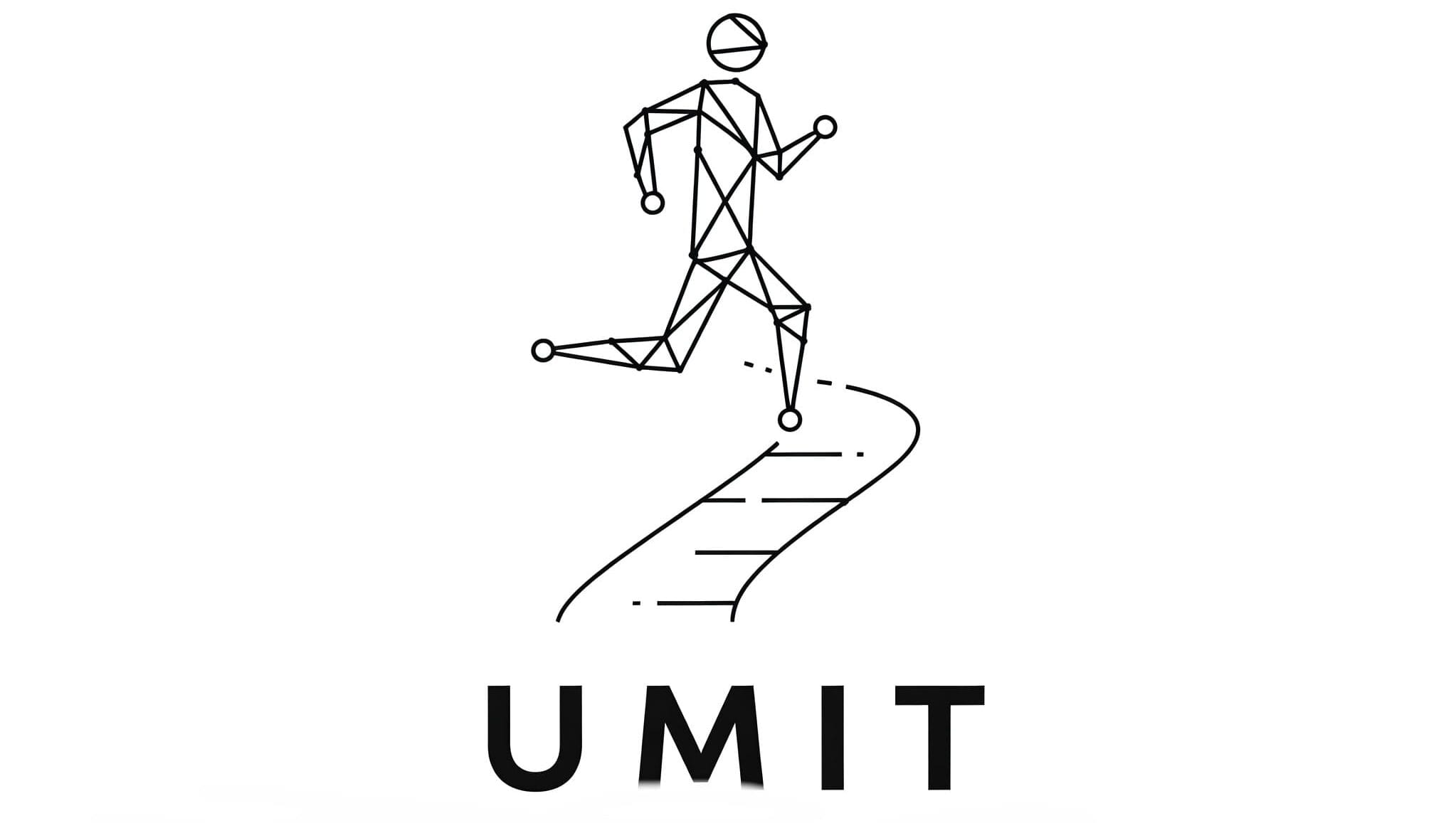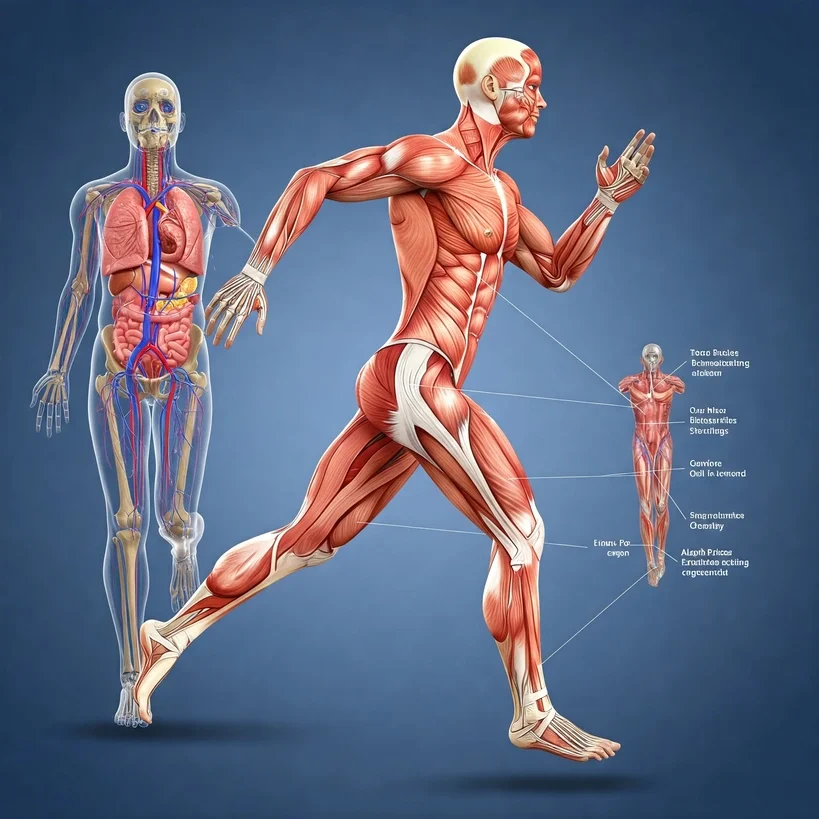1. Introduction: Understanding Running Physiology 🧠💡
Running is more than just putting one foot in front of the other. It’s a dynamic process that involves complex physiological systems working together to propel you forward. Understanding the science behind your body’s response to running can give you the edge you need to improve performance and stay injury-free.
In this post, we’ll explore:
- The mechanics of how running affects muscles, bones, and energy systems.
- The physiological differences between long-distance running and sprints.
- How biomechanics, nutrition, strength training, and mental strategies work together to make you a better runner.
By diving into the science of running, you’ll understand why your body works the way it does, allowing you to optimize your training and perform at your best.
2. How the Body Works While Running 💪
Muscle Fibers: Type I vs. Type II Fibers ⚡
Your muscles are made up of two primary types of fibers:
- Type I (Slow-Twitch) Fibers:
These are fatigue-resistant fibers used during long, steady runs. They rely on aerobic energy (with oxygen) and are great for endurance activities. - Type II (Fast-Twitch) Fibers:
These fibers are used during short bursts of power, like sprinting. They rely on anaerobic energy (without oxygen) and fatigue faster but are essential for high-intensity efforts.
The ideal balance between Type I and Type II fibers depends on your running goals. Long-distance runners tend to have a higher proportion of Type I fibers, while sprinters rely more on Type II fibers.
Energy Systems: Aerobic vs. Anaerobic Systems 🏃♀️💨
- Aerobic System:
This system is used during longer, slower efforts. The body relies on oxygen to convert fats into energy, which is ideal for endurance running. Think marathons or long training runs. - Anaerobic System:
This system kicks in during short bursts of speed. It uses energy stored in the muscles (glycogen) without the need for oxygen. This is why sprinting or hill repeats feel so intense — your body is relying on anaerobic energy.
The Cardiovascular System: Oxygen Circulation 🩸
When you run, your heart rate increases to pump oxygen-rich blood to your muscles. The better conditioned your cardiovascular system is, the more efficiently it can deliver oxygen, allowing you to sustain longer runs without fatigue.
Pro Tip: Regular aerobic training increases the size and efficiency of your heart, enabling it to pump more blood with each beat. This is why experienced runners can often maintain faster paces without feeling out of breath.
Motivation Box:
“The more you understand your body, the better you can optimize its performance!” 🌟
3. Key Energy Systems in Running ⚡
Understanding the energy systems your body uses during running is crucial for training smarter. Here’s a deeper look at the three primary energy systems that fuel your runs:
1. The Aerobic System: Endurance Fuel 🏃♂️
This system is what you use during long, steady runs. It primarily uses fat as fuel and requires oxygen to produce energy. The aerobic system is most active during long-distance running, where energy demands are constant and moderate.
- Duration: Over 3 minutes of steady activity (think a marathon or long training run).
- Fuel: Fat stores, which are more efficient for prolonged efforts.
2. The Anaerobic System: Sprinting Fuel 💨
During high-intensity, short efforts (like sprints), the body relies on the anaerobic system. This system does not require oxygen but uses stored glycogen in the muscles to produce quick bursts of energy. It’s perfect for events like 5Ks or interval training.
- Duration: Short bursts (0-90 seconds).
- Fuel: Glycogen stored in muscles.
3. The Role of Lactate: Lactic Acid and Fatigue 🏋️♀️
When running at high intensities, your body can accumulate lactic acid, which causes that burning sensation in your muscles. While lactic acid used to be blamed for muscle fatigue, recent research shows that it’s actually lactate that helps fuel your muscles during intense efforts.
Pro Tip: As you train, you become more efficient at clearing lactate from your muscles, allowing you to run harder without experiencing fatigue as quickly.
Biomechanics of Running: Form and Efficiency 🏃♀️⚖️
Running efficiently isn’t just about speed. It’s about form and biomechanics — the way your body moves, your posture, stride, and how you manage energy expenditure. Let’s break down the science behind running form and how it impacts your performance and injury prevention.
4. Biomechanics of Running: Form and Efficiency 🏃♂️⚖️
Proper Running Form: The Key to Efficiency and Injury Prevention 💡
Your running form directly influences both performance and injury risk. The better your form, the more energy-efficient you become, and the less stress you place on your muscles and joints.
Key factors in good running form:
- Posture: Keep your torso upright, avoiding a forward lean. This helps you use your energy efficiently and reduces stress on the lower back.
- Head Position: Look forward, not down. Keeping your head up and your eyes focused ahead prevents neck strain and keeps your posture aligned.
- Arm Swing: Your arms should swing naturally in rhythm with your stride. Keep your elbows bent at 90 degrees and avoid crossing your arms in front of your body, which can cause unnecessary tension.
The Role of Stride Length and Cadence 📏
- Stride Length:
Overstriding (landing with your foot too far in front of your body) can lead to inefficiency and increased injury risk. The key is to land with your foot under your hips, which allows for better energy transfer and reduces impact forces. - Cadence (Step Rate):
Cadence refers to the number of steps you take per minute. Research shows that a higher cadence (around 180 steps per minute) reduces the impact forces on your legs and increases efficiency. Aim for a quick, light step instead of long, heavy strides.
Pro Tip:
To improve your cadence, try running with a metronome or using music with a consistent beat. It can help you maintain a higher cadence with less effort.
5. The Role of Strength and Conditioning in Running 🏋️♂️💪
Strength training isn’t just for bodybuilders; it’s essential for runners too. Building strength in the core, glutes, hips, and legs helps improve your running efficiency, prevents injuries, and enhances your performance.
How Strength Training Benefits Running Performance 🏃♀️💥
- Core Strength:
A strong core stabilizes your torso, reduces unnecessary sway, and prevents lower back pain. A solid core also helps maintain good posture during long runs, reducing fatigue. - Glutes and Hips:
Your glutes and hip flexors play a critical role in propelling you forward and maintaining a proper stride. Strengthening these muscles helps you run faster and with more power, while also preventing injuries like IT band syndrome. - Leg Muscles:
The quadriceps, hamstrings, and calves are the powerhouse of running. Strengthening these muscles helps prevent injuries like hamstring strains or calf pulls, and also helps you maintain a strong push-off with each stride.
Quick Checklist:
- Strengthen core muscles (planks, dead bugs).
- Focus on glute exercises (bridges, lunges).
- Add leg exercises (squats, calf raises) to your routine.
Motivation Box:
“The stronger you are, the faster you’ll run — it’s science!” 💥
6. Injury Prevention: The Science Behind It 🛡️
One of the biggest advantages of understanding running physiology is injury prevention. By knowing how your body works, you can spot the early signs of injury and address them before they sideline you.
How Understanding Physiology Helps Prevent Injuries 🔍
- Overuse Injuries:
Many running injuries are caused by overuse, such as stress fractures or tendinitis. By recognizing the importance of rest and recovery, you can avoid these injuries and keep your training consistent. - Running Form and Injury Risk:
Improper running form, such as overstriding or poor posture, increases stress on your joints, leading to knee pain, shin splints, or lower back issues. Regularly assessing and improving your form can reduce your risk of these common injuries.
Common Running Injuries and How to Avoid Them ⚠️
- Shin Splints:
Caused by overuse and improper footwear. Prevention: Build strength in your lower legs and use proper running shoes. - Runner’s Knee:
Resulting from weak hip muscles or improper tracking of the patella. Prevention: Strengthen your hips and quads and focus on proper alignment during runs. - Plantar Fasciitis:
Caused by tight calves and weak foot muscles. Prevention: Stretch your calves and use supportive shoes.
External Link Suggestion:
For a deeper dive into strength training and injury prevention, check out the National Strength and Conditioning Association (NSCA).
Fueling for Performance: The Science of Nutrition 🥗💧
Your body is a machine, and just like any machine, it needs the right fuel to perform at its best. Proper nutrition is essential for runners to maintain energy levels, optimize performance, and speed up recovery.
7. Fueling for Performance: The Science of Nutrition 🍎
The Importance of Carbohydrates, Proteins, and Fats for Runners 🍞🥩🥑
As a runner, your body relies on a combination of carbohydrates, proteins, and fats to fuel your performance.
- Carbohydrates:
Carbs are the body’s primary source of energy. When you run, your body breaks down carbohydrates into glucose, which is then stored as glycogen in your muscles and liver. Glycogen is your go-to fuel for endurance running.
What to Eat: Whole grains, fruits, vegetables, and starchy foods like pasta or rice. - Proteins:
Protein is crucial for muscle recovery and repair. After a run, your muscles need protein to rebuild and grow stronger.
What to Eat: Lean meats, fish, eggs, beans, and dairy products. - Fats:
While fats are slower to digest, they provide long-lasting energy, especially during longer runs. Healthy fats are also essential for absorbing vitamins and supporting cell function.
What to Eat: Avocados, nuts, seeds, olive oil, and fatty fish.
Hydration Strategies: The Key to Endurance 💧
Hydration is just as important as fueling. Dehydration can lead to decreased performance, muscle cramps, and fatigue.
- Before a Run:
Aim to drink water throughout the day, and try to hydrate 30 minutes before you run. Consider a sports drink if you’re doing a longer run or workout to replenish electrolytes. - During a Run:
For runs longer than 45 minutes, drink small amounts of water every 20 minutes. If you’re running for more than 90 minutes, add a sports drink to replenish electrolytes like sodium and potassium. - After a Run:
Rehydrate with water or an electrolyte-rich drink. You can also consider a recovery shake with carbs and protein to kickstart muscle repair.
Motivation Box:
“Feed your body right — it’s your most valuable running tool!” 🏅
8. Mental Strategies for Optimal Performance 🧠💪
Running is as much a mental challenge as it is a physical one. The connection between the mind and body can be the key to breaking through physical barriers and achieving personal bests.
The Mind-Body Connection: Performance Starts in Your Head 🧘♂️
Your brain plays a pivotal role in how well you perform. The way you perceive pain, fatigue, and effort can directly influence your performance. Harnessing your mental strength can help you push through tough training sessions or races.
- Visualization:
Top athletes use mental imagery to visualize their success before a race. Imagine yourself crossing the finish line, feeling strong and confident. This mental preparation sets you up for physical success. - Goal Setting:
Setting realistic, short-term goals gives you a roadmap for your training and helps keep you focused. Break down long-term goals (like running a marathon) into smaller, more achievable steps (like running a 5K or hitting a specific time goal). - Staying Positive:
A positive mindset boosts motivation and helps you overcome obstacles. When you feel fatigue setting in, focus on the feeling of accomplishment and the reward waiting for you at the end of the run.
Techniques to Stay Motivated During Tough Training 💪
- Break it Down:
When a run feels long, break it into smaller segments. Focus on one mile at a time or run to a specific landmark, and celebrate each small victory. - Find a Running Buddy:
Running with others can help keep you motivated. Whether it’s a friend or a local running group, the social aspect of running can push you to perform better. - Reward Yourself:
Celebrate your achievements with a post-run treat or a small reward. It could be a healthy smoothie, a relaxing stretch, or a relaxing activity you enjoy.
Motivation Box:
“Believe in yourself, and your body will follow. Your only limit is you!” 🚀
9. Conclusion: Understanding the Science for Better Running 🏅
Running is an intricate combination of biomechanics, energy systems, strength, nutrition, and mental fortitude. By understanding the science behind your body’s movements and needs, you can improve performance, prevent injury, and become a stronger, more efficient runner.
Key Takeaways:
- Muscle fibers play a crucial role in your energy output and endurance.
- Energy systems determine how your body uses fuel, whether for long runs or sprints.
- Biomechanics and form directly influence your running efficiency and injury risk.
- Strength training and nutrition are essential for optimal performance.
- Mental strategies can help you overcome physical barriers and achieve your goals.
By applying the principles of running physiology and science, you can optimize your training, race faster, and keep running strong for years to come.
What’s your top mental strategy to push through tough training sessions?
Let us know in the comments and share your tips!

About the Author
Lost Pace is an ultramarathon runner, shoe-tester and the founder of umit.net. Based year-round in Türkiye’s rugged Kaçkar Mountains, he has logged 10,000 + km of technical trail running and completed multiple 50 K–100 K ultras.
Blending mountain grit with data, Lost analyses power (CP 300 W), HRV and nutrition to craft evidence-backed training plans. He has co-written 260 + long-form guides on footwear science, recovery and endurance nutrition, and is a regular beta-tester of AI-driven coaching tools.
When he isn’t chasing PRs or testing midsoles, you’ll find him sharing peer-reviewed research in plain English to help runners train smarter, stay healthier and finish stronger.
Ultrarunner · Data geek · Vegan athlete

